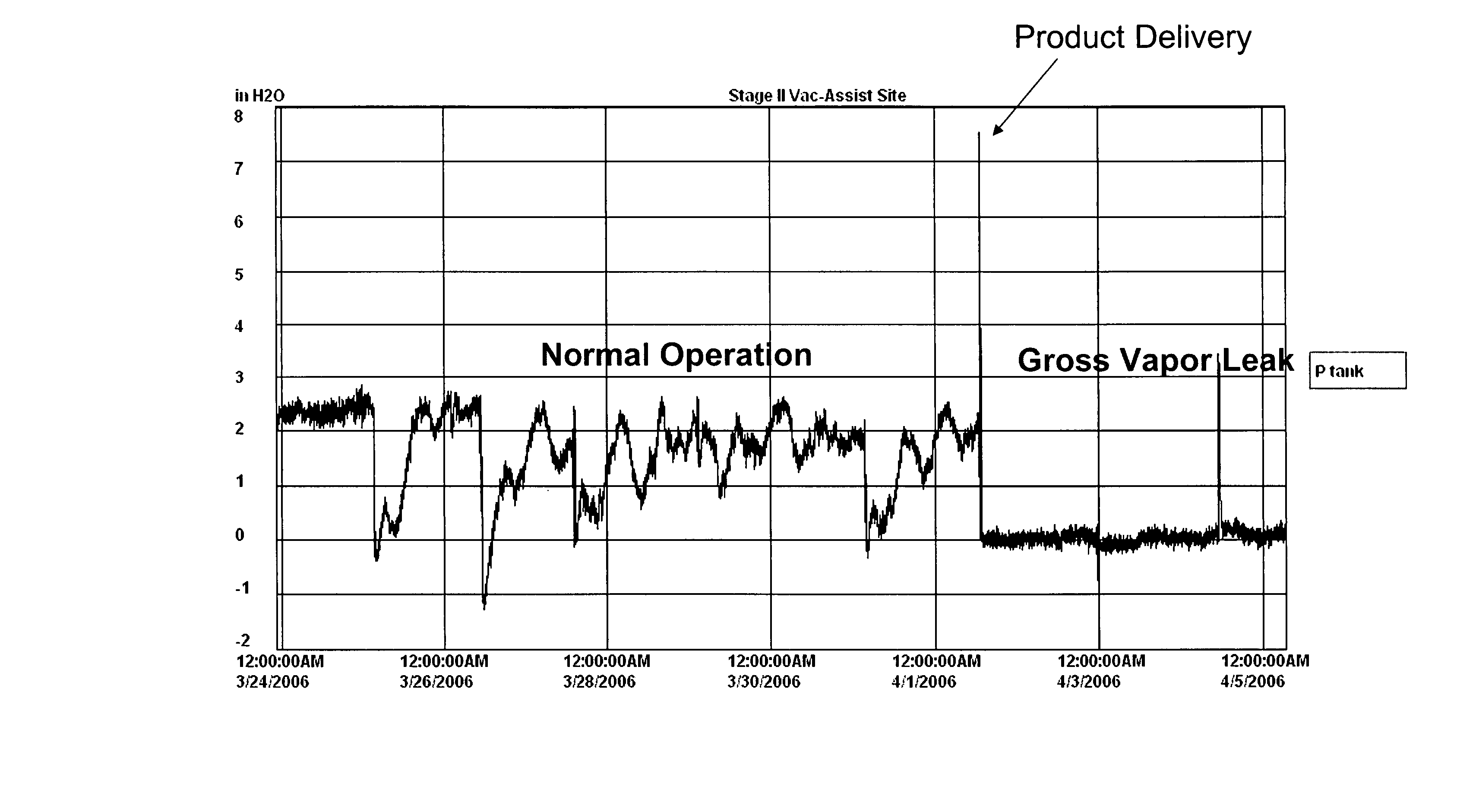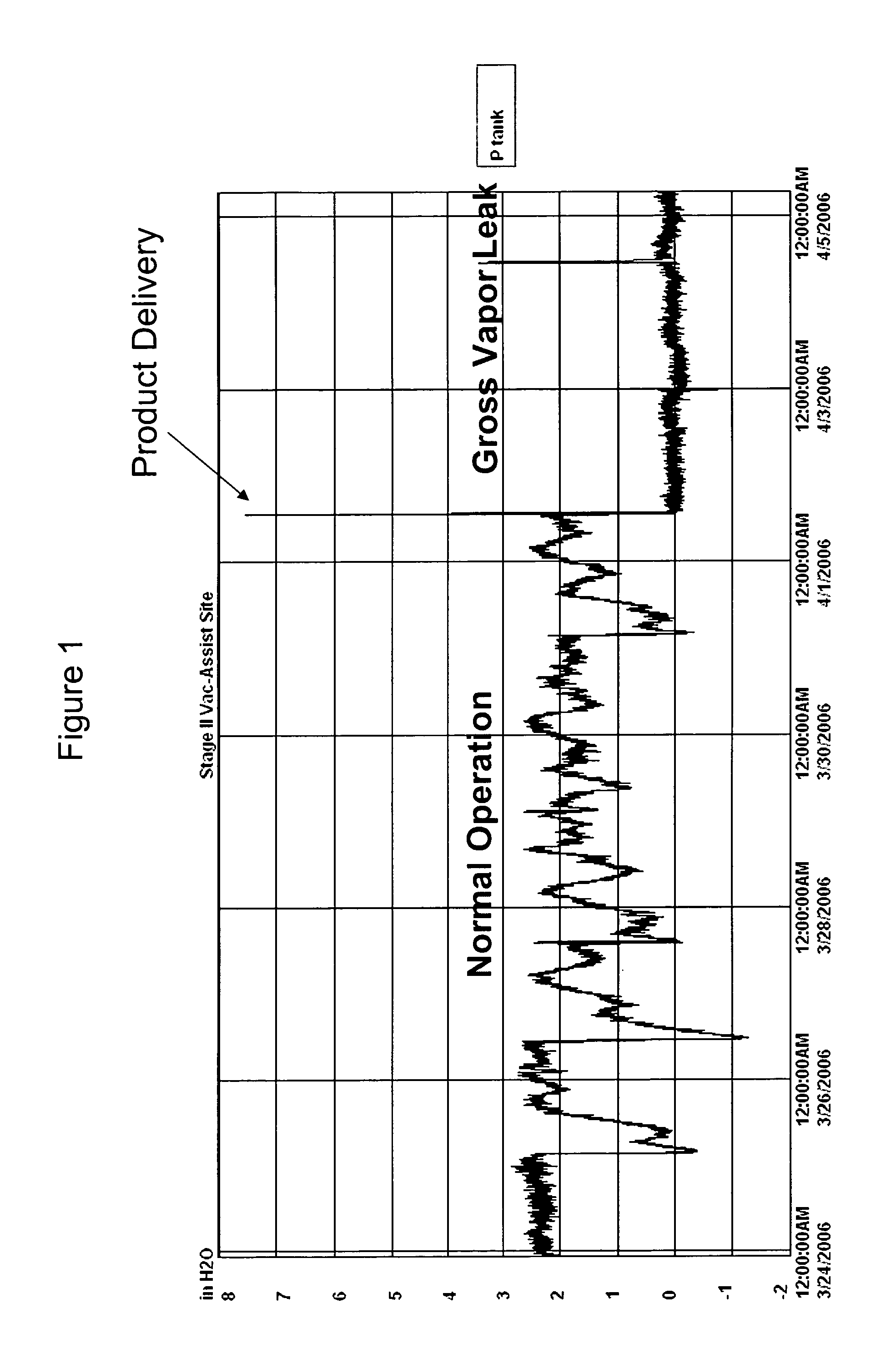Method and system for liquid and vapor leak detection
a liquid and vapor leak detection and detection method technology, applied in the direction of fluid tightness measurement, digital computer details, instruments, etc., can solve the problems of vapor emissions affecting the economic loss of the retailer, environmental hazards to both air and groundwater, and negative impact on human health
- Summary
- Abstract
- Description
- Claims
- Application Information
AI Technical Summary
Benefits of technology
Problems solved by technology
Method used
Image
Examples
Embodiment Construction
[0023] The present invention comprises a method of transforming an “open” gasoline storage and transfer system to a “closed” system. The method includes providing a selectively permeable membrane processor on the combined storage tank ullage space in conjunction with the installation of a p / v valve on the combined storage tank vent lines. The normal vent to atmosphere is fitted with the p / v valve such that the storage tank system becomes a closed system, sealed off from the atmosphere. A pressure sensor is installed to measure atmospheric pressure and another sensor is installed to measure and monitor the pressure differential between the combined storage tank ullage and prevailing atmospheric pressure. When the pressure differential reaches a prescribed value, the membrane processor is actuated to exhaust to the atmosphere air which has been depleted of hydrocarbons and return vapors, enriched with hydrocarbons to the combined ullage space. (See U.S. Pat. No. 6,836,732 B2)
[0024] I...
PUM
 Login to View More
Login to View More Abstract
Description
Claims
Application Information
 Login to View More
Login to View More - R&D
- Intellectual Property
- Life Sciences
- Materials
- Tech Scout
- Unparalleled Data Quality
- Higher Quality Content
- 60% Fewer Hallucinations
Browse by: Latest US Patents, China's latest patents, Technical Efficacy Thesaurus, Application Domain, Technology Topic, Popular Technical Reports.
© 2025 PatSnap. All rights reserved.Legal|Privacy policy|Modern Slavery Act Transparency Statement|Sitemap|About US| Contact US: help@patsnap.com



